
Xpeng P7 faces a winter test: performs well despite temporary speech impediment
“Turn right and take the third exit in the direction of Desden!” If you are wondering whether our articles are no longer edited properly, we’re sorry to have to inform you: they are, and that is what our test car said. Verbatim. The Xpeng P7’s navigation system had an endearing speech impediment while operating in German, which can be quite difficult to pronounce.
As likeable as the language error is, some menu translations proved to be quite annoying. For example, when you want to use the automatic parking assistant and the display literally says: “Parking is abnormal, please contact customer service.” However, these details (which can easily be eradicated with an OTA update) should not give the impression that we are not looking at a proper electric car.
And that is remarkable, as the electric sedan is only the Chinese manufacturer’s second car ever – the Xpeng G3 was still available at its premiere, while the two SUV models G9 and G6 (our driving reports here and here) were only added later. Production of the series version began in Zhaoqing in May 2020. The electric model has only been available in Europe since 2024, although it was introduced in Norway in 2021, before Xpeng stopped accepting orders from Europe in 2022. According to the configurator, the performance version with the all-wheel-drive that Xpeng provided us over the Christmas break currently costs 59,500 euros. Additional details, such as the Space Grey colour (900 euros), are already included. And for this money, you get an impressive luxury sedan measuring just under 4.9 metres in length and an 82.7 kWh lithium-ion battery (net), which can certainly satisfy German premium demands. The Xpeng P7 already performed well in our summer test. Can it also confirm this impression in the cold season?
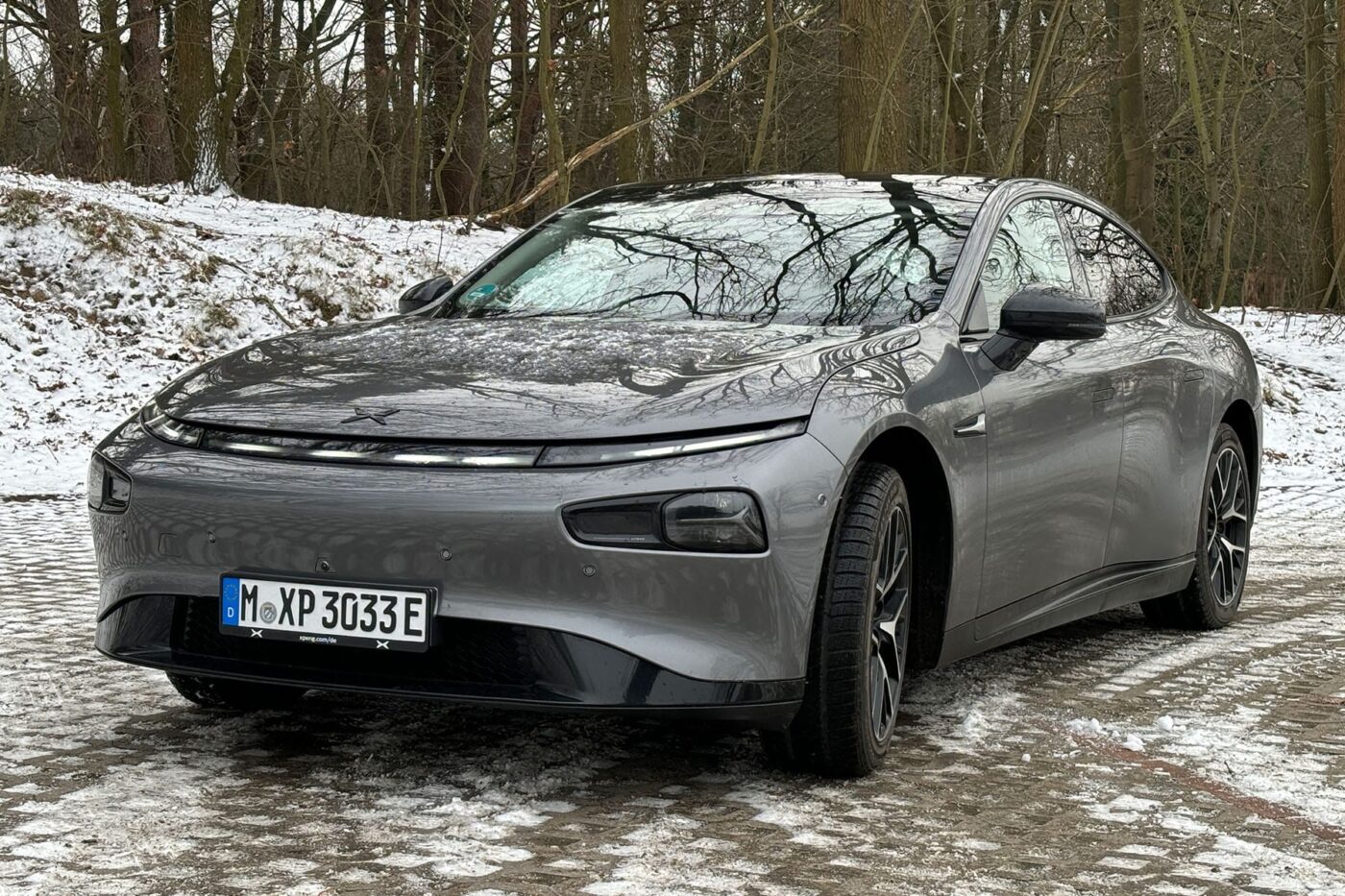
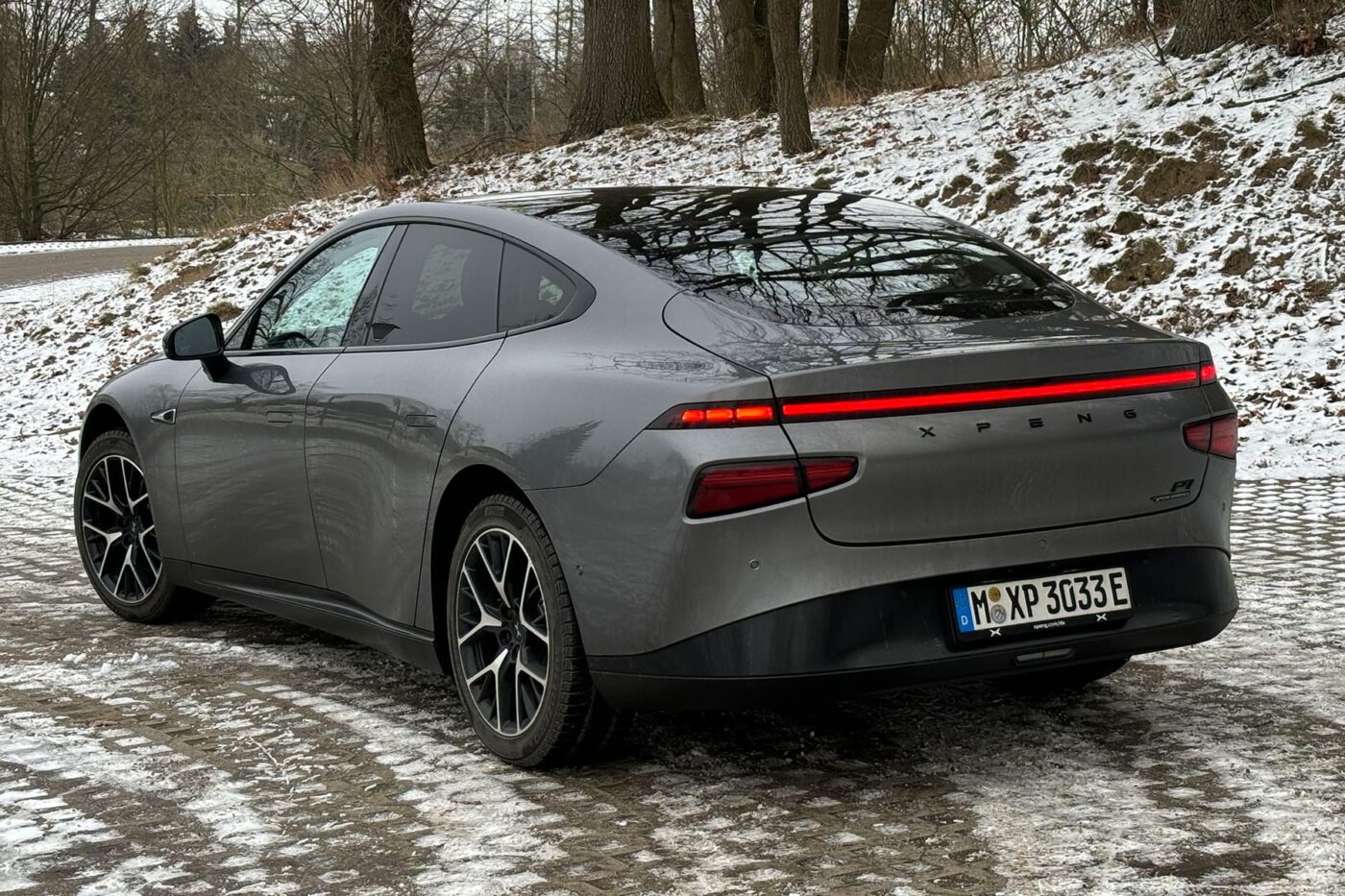
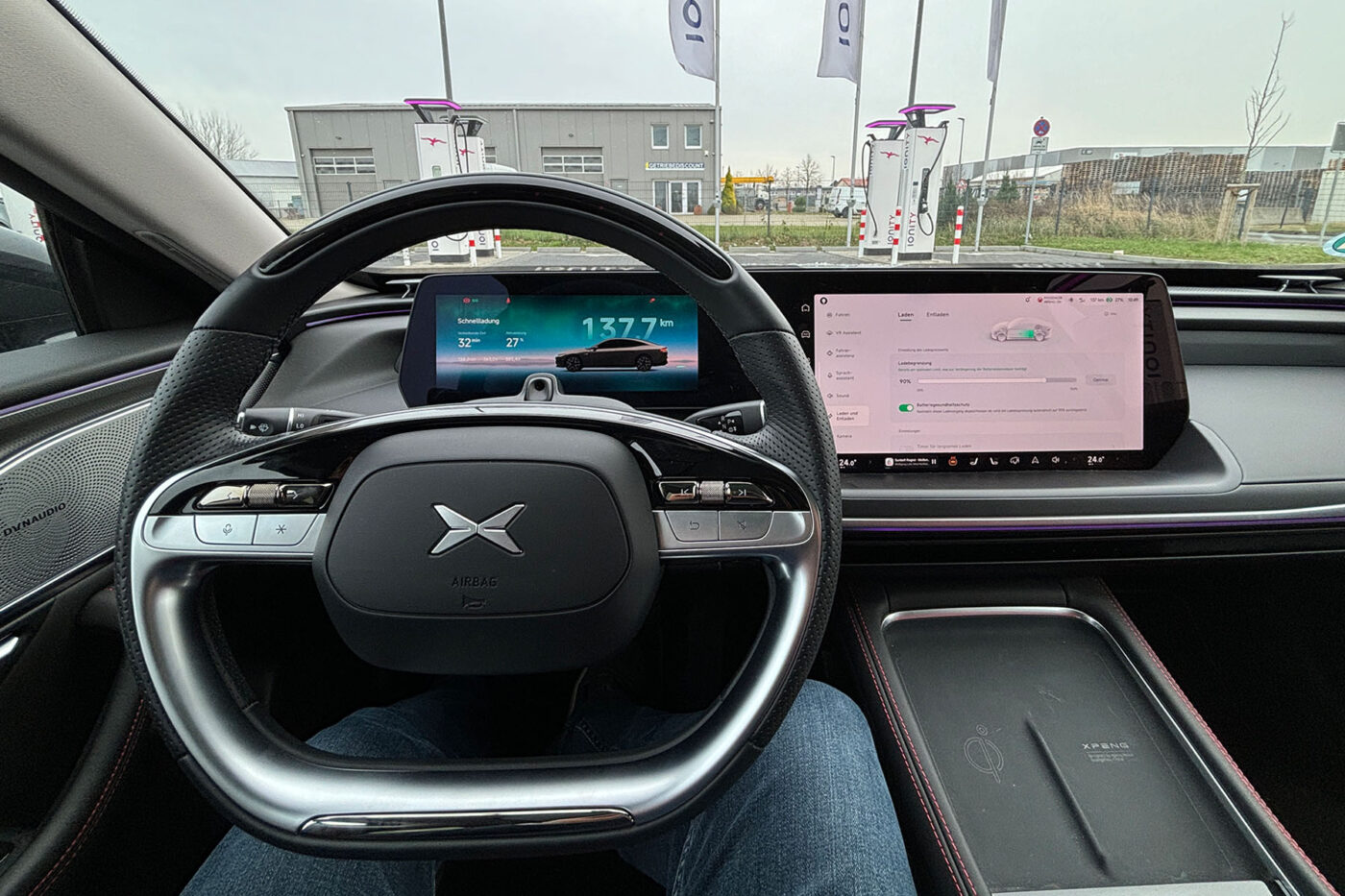
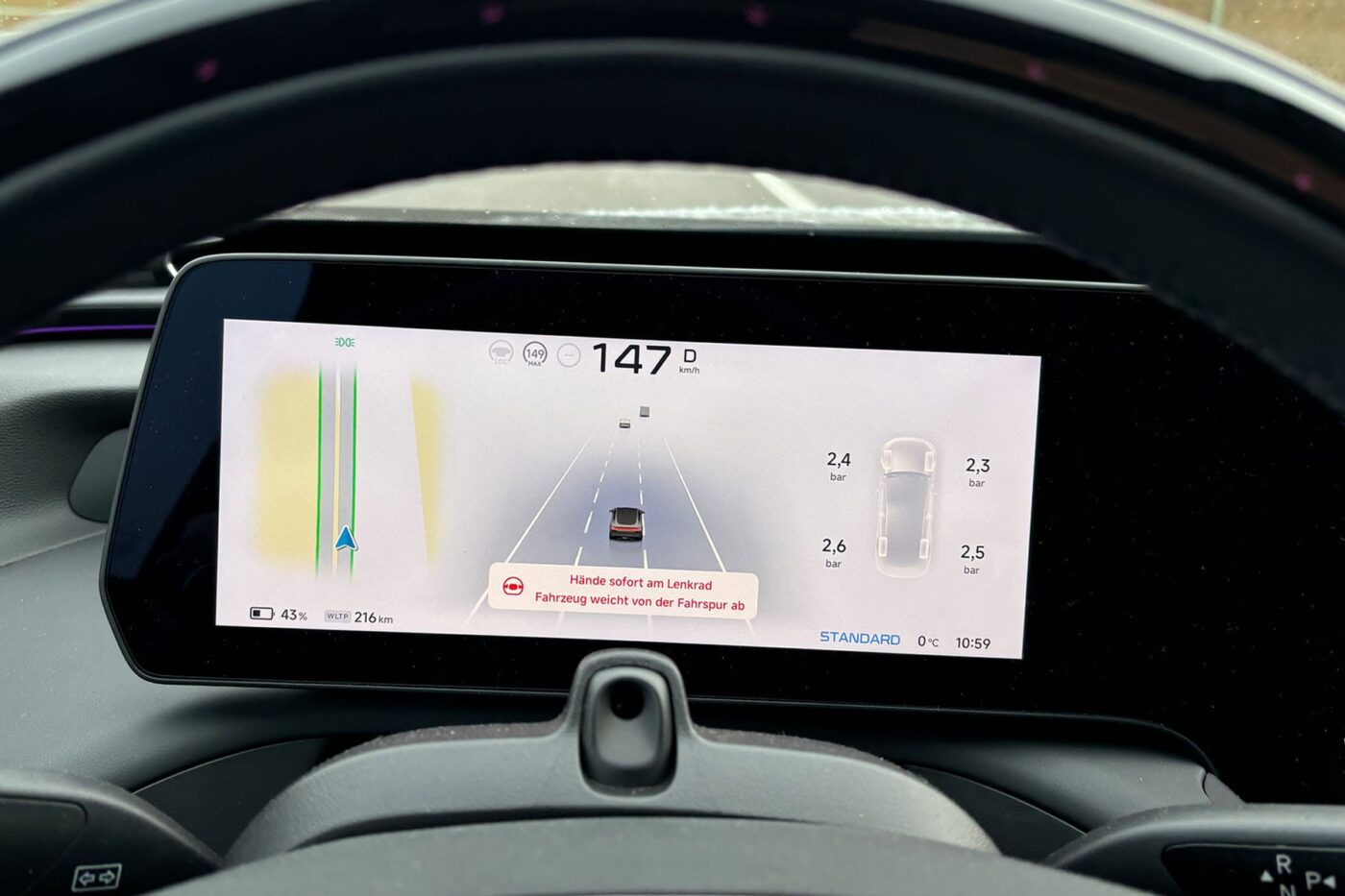
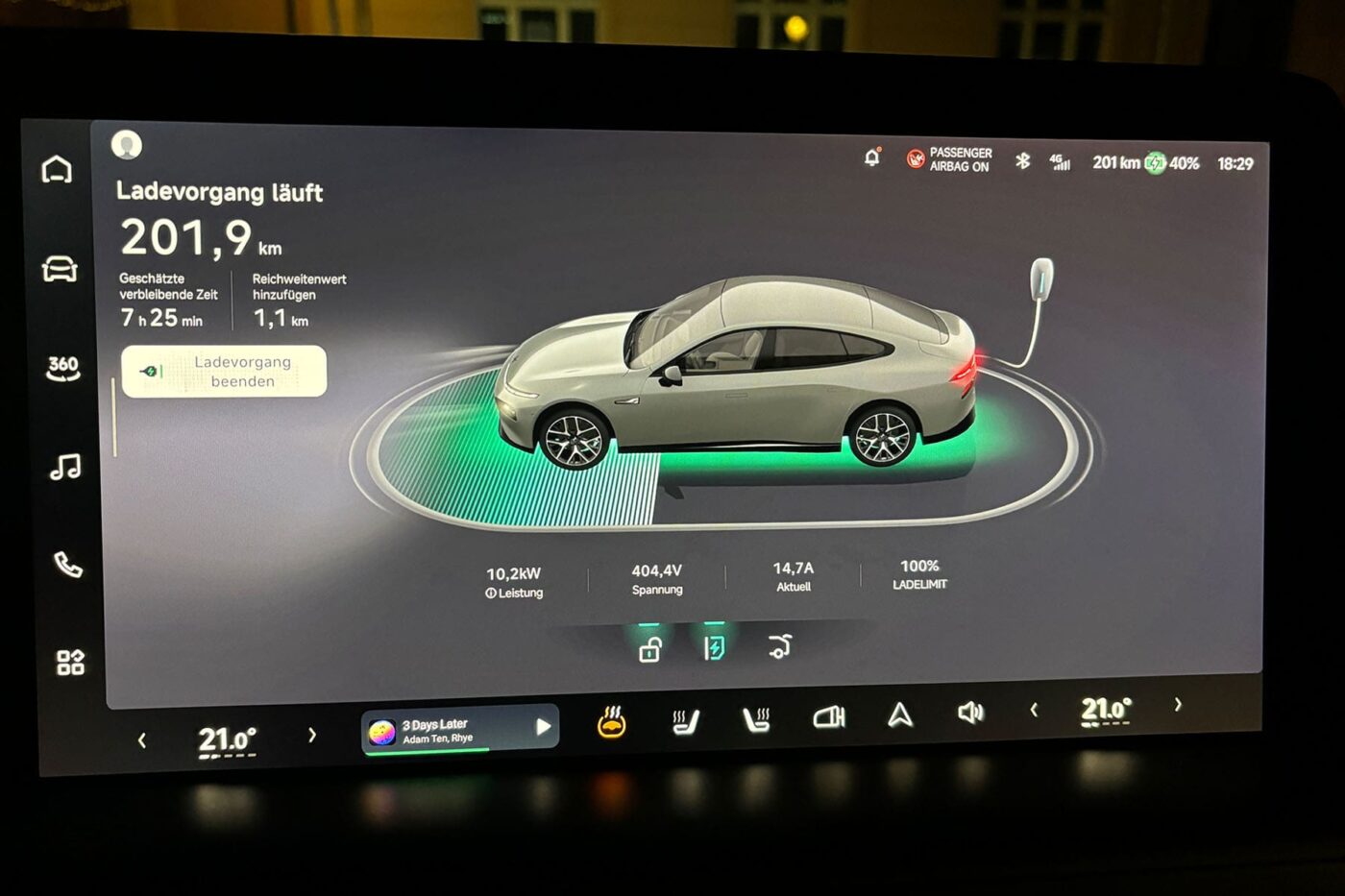
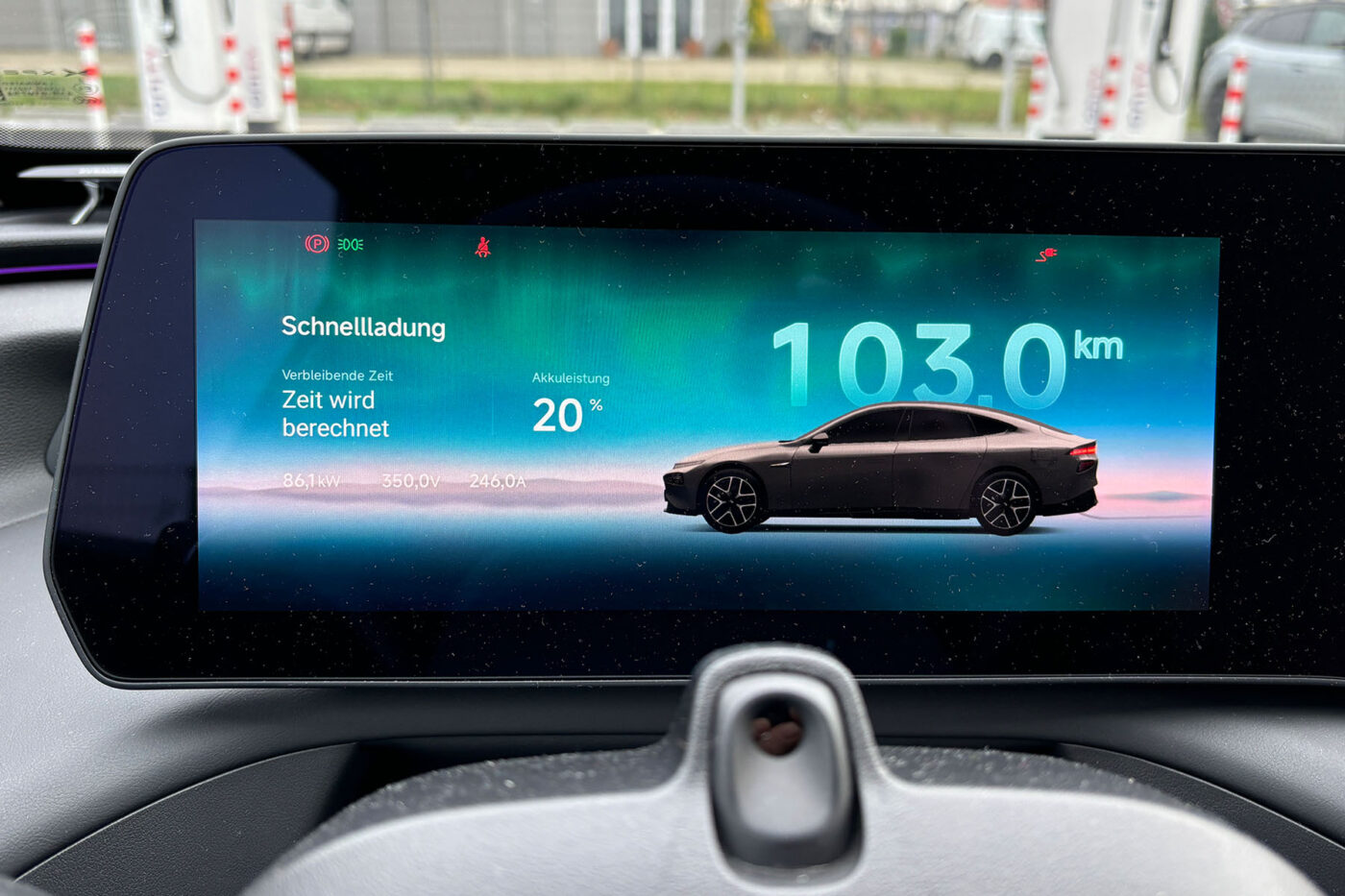
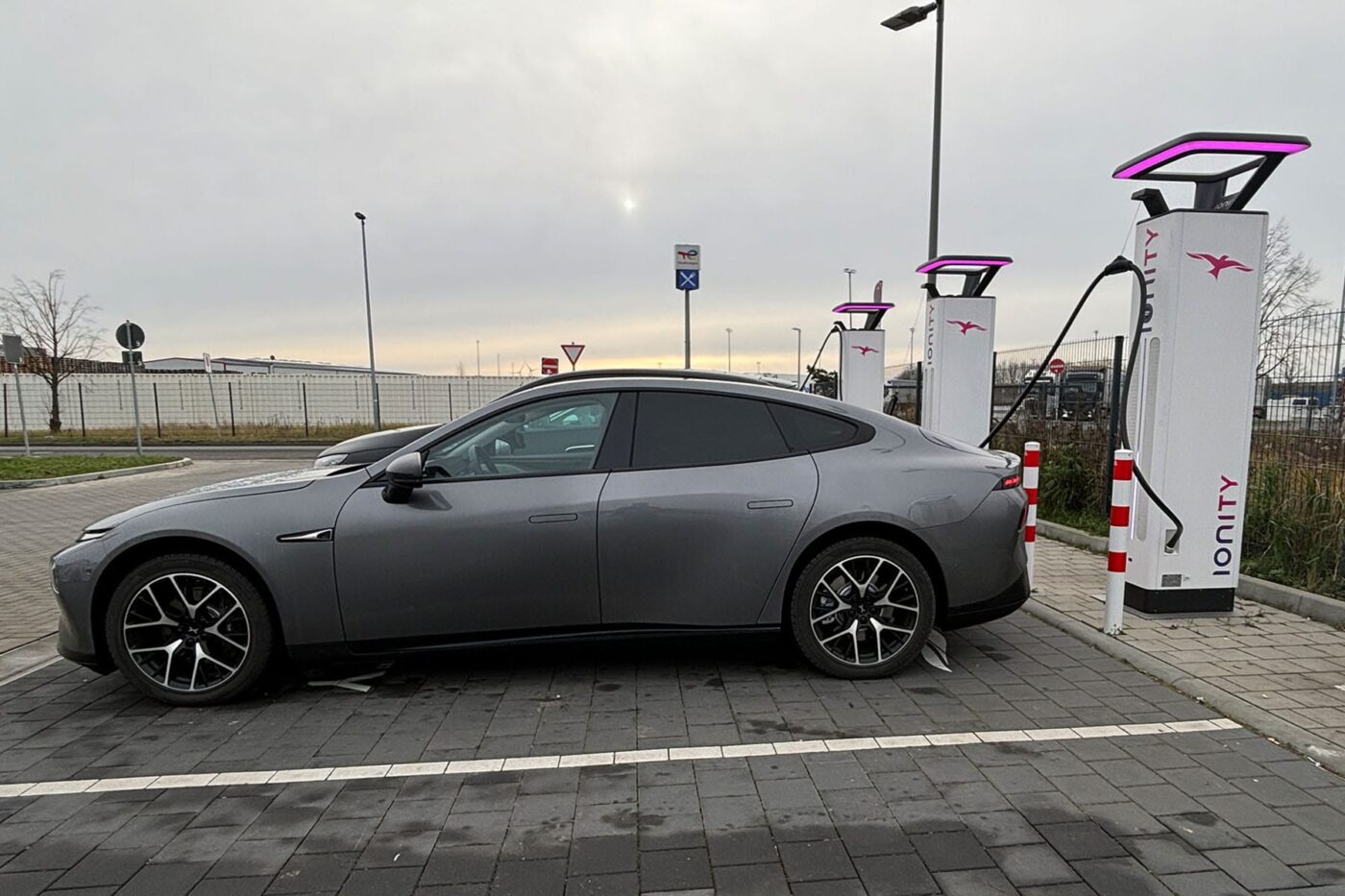
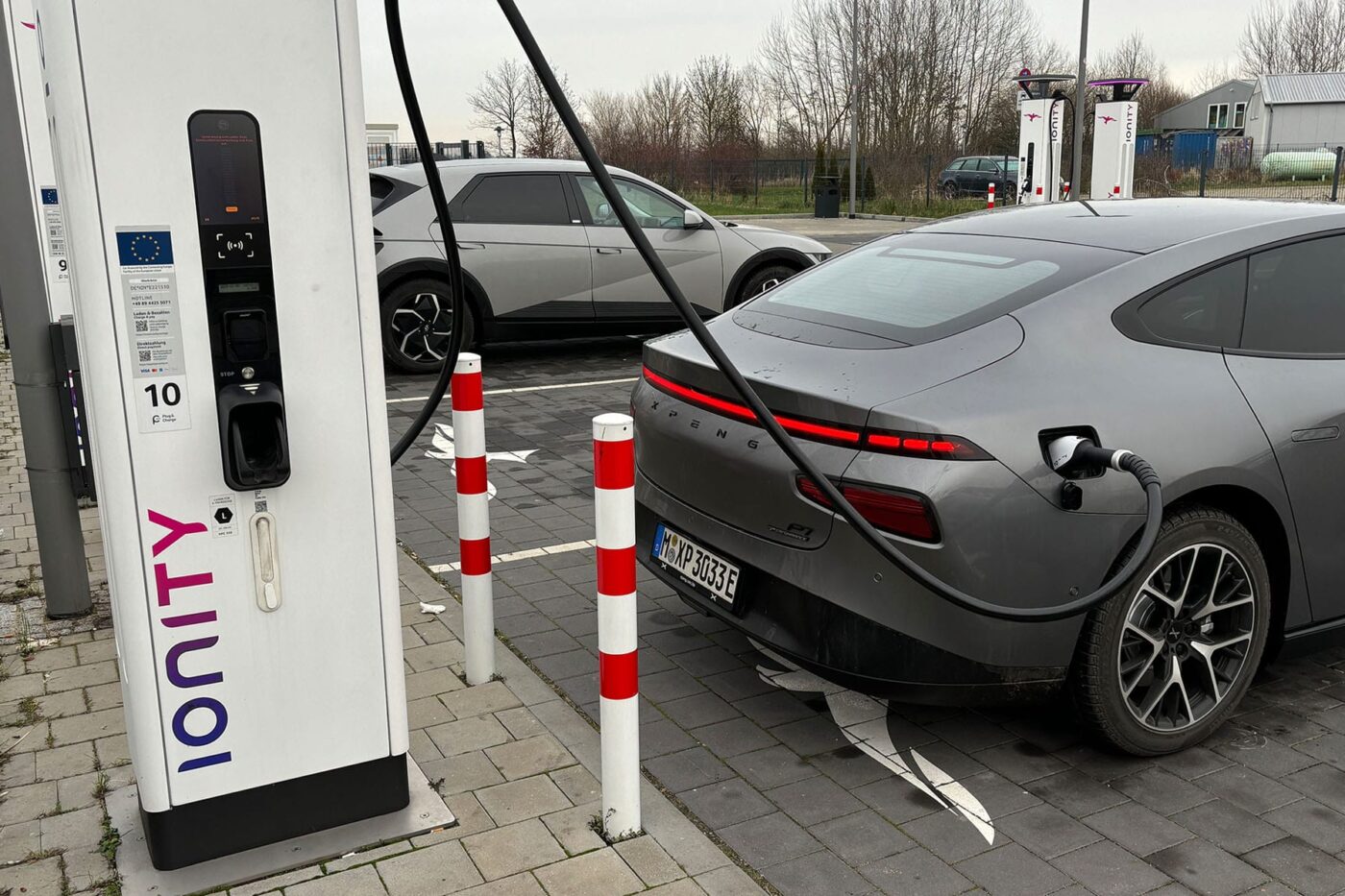
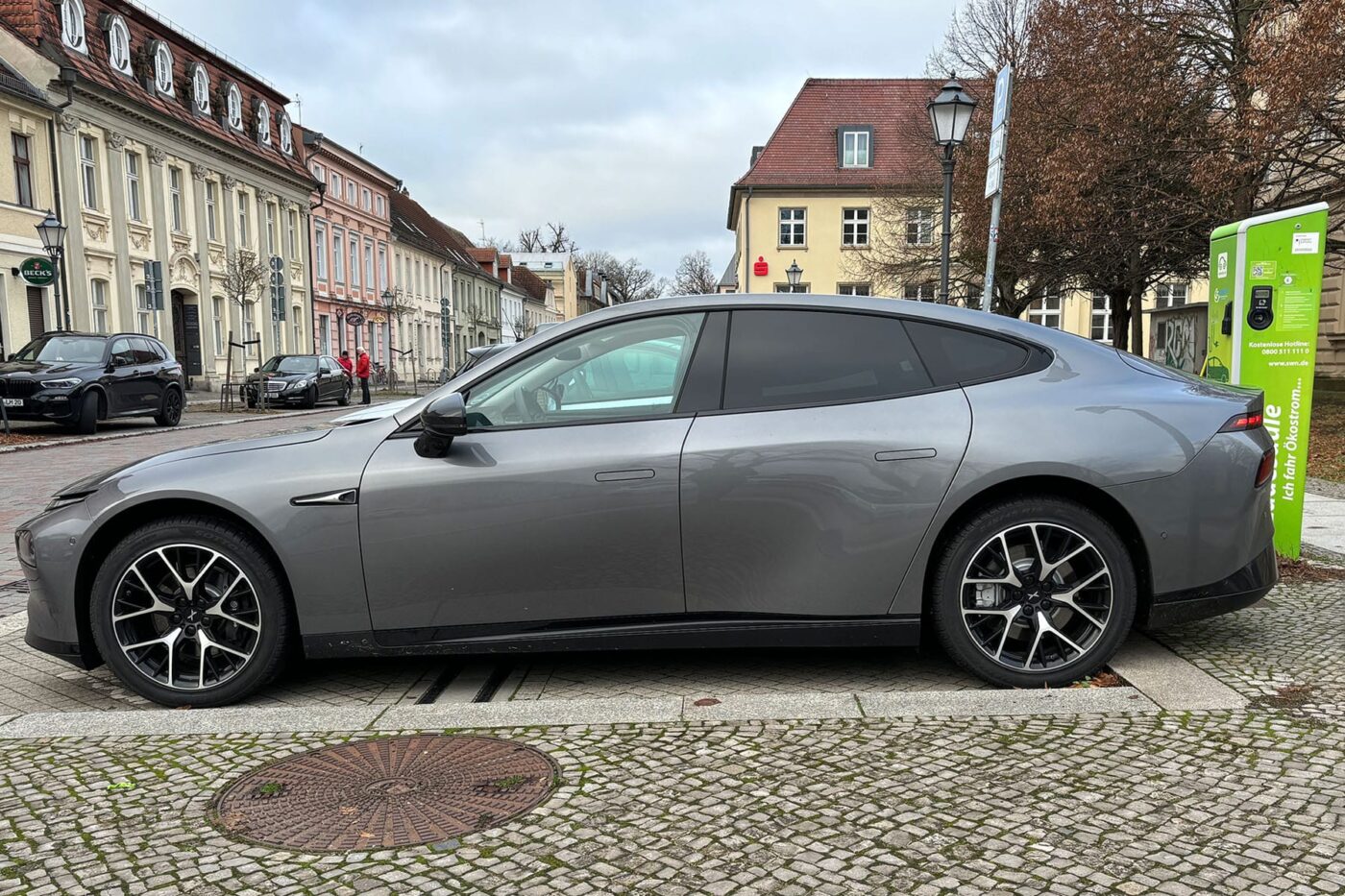
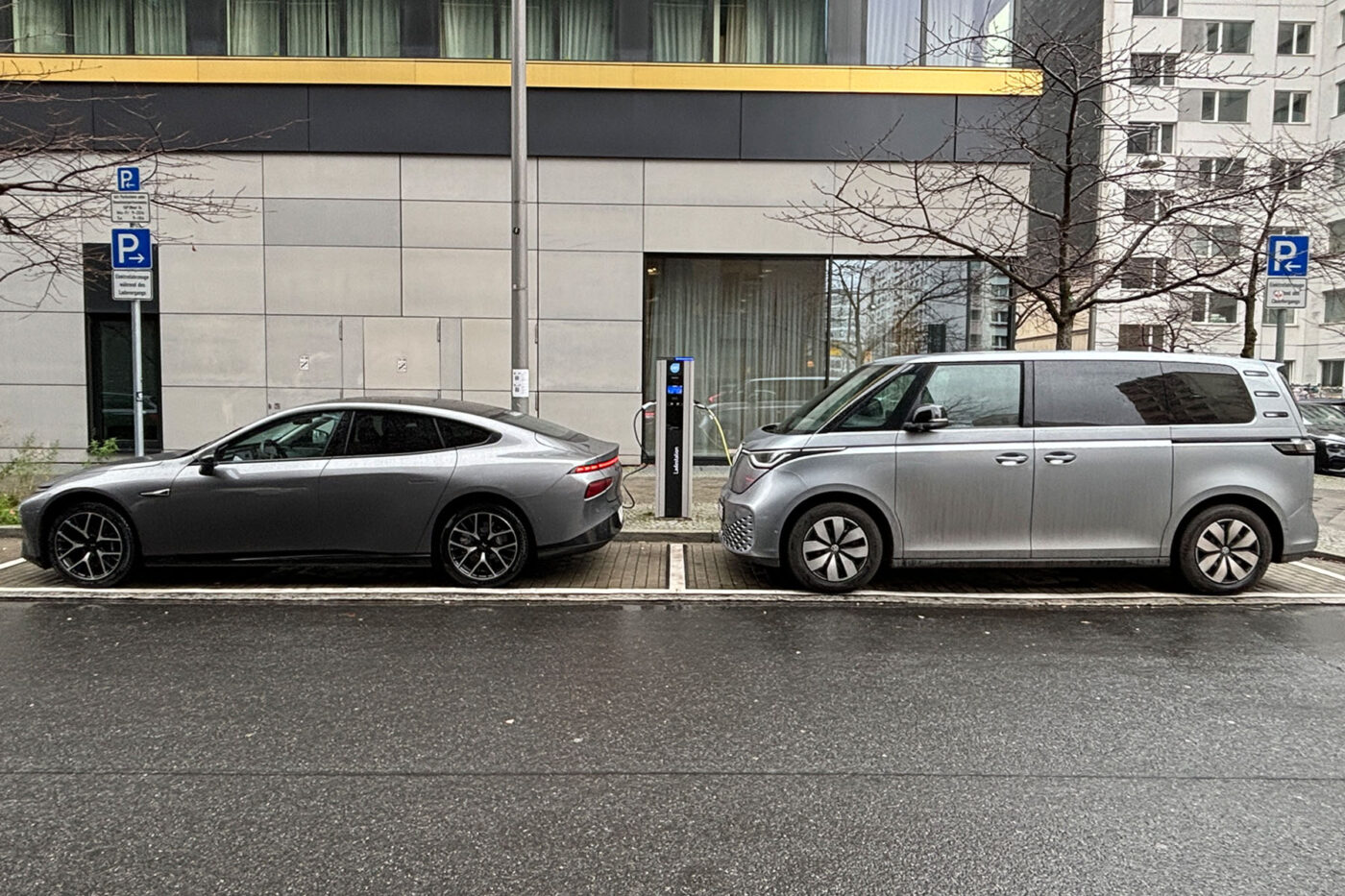
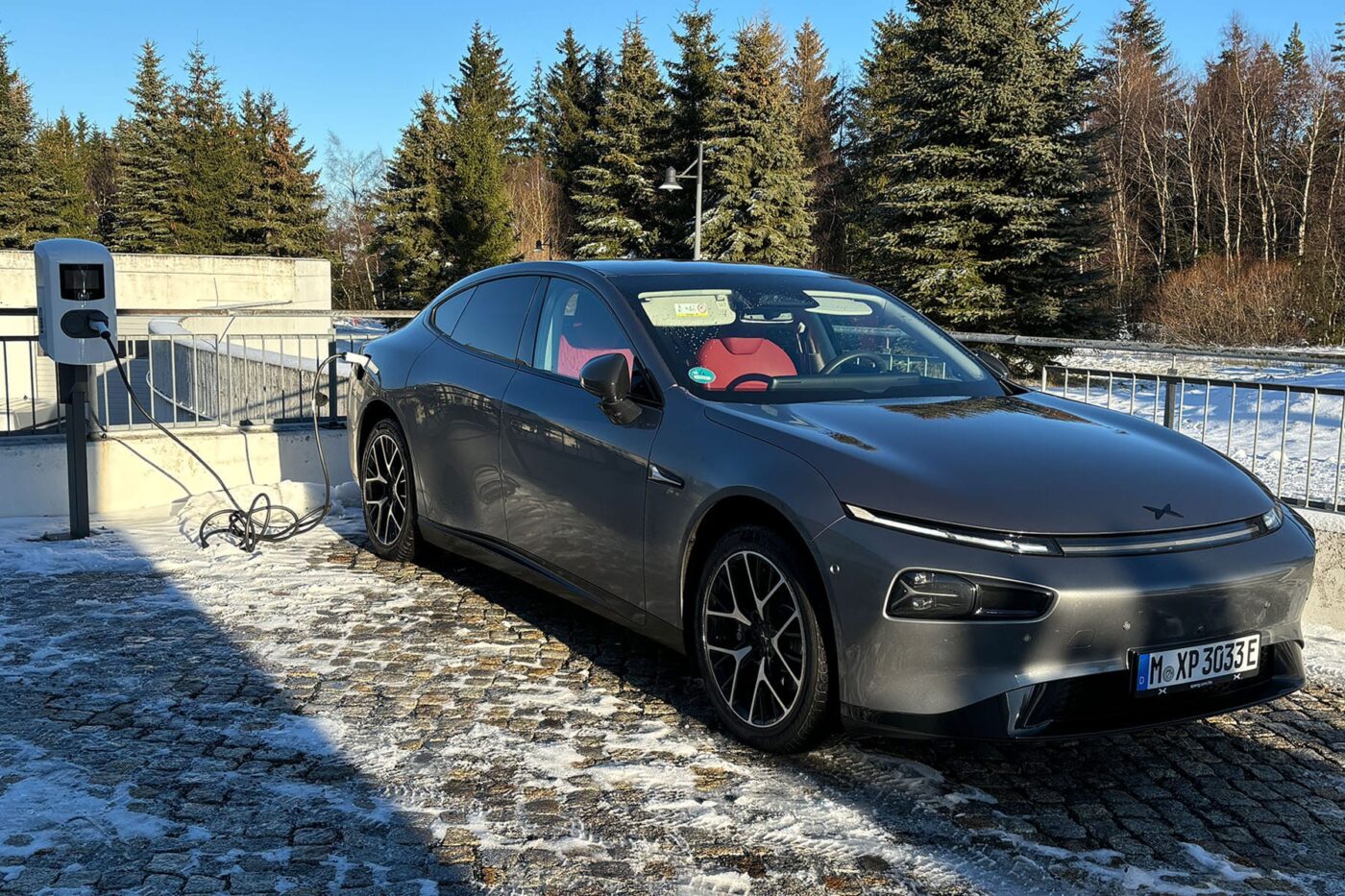
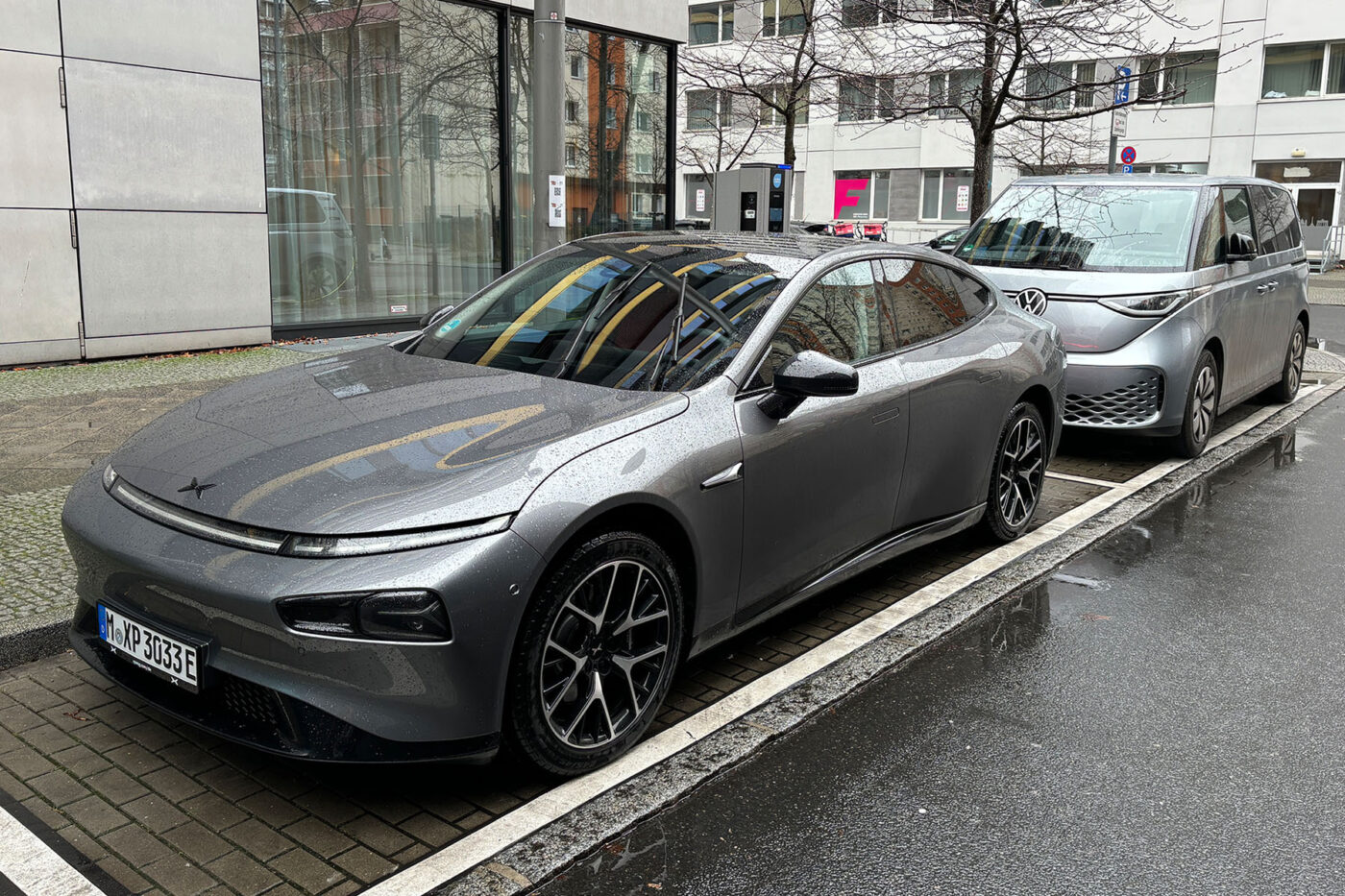
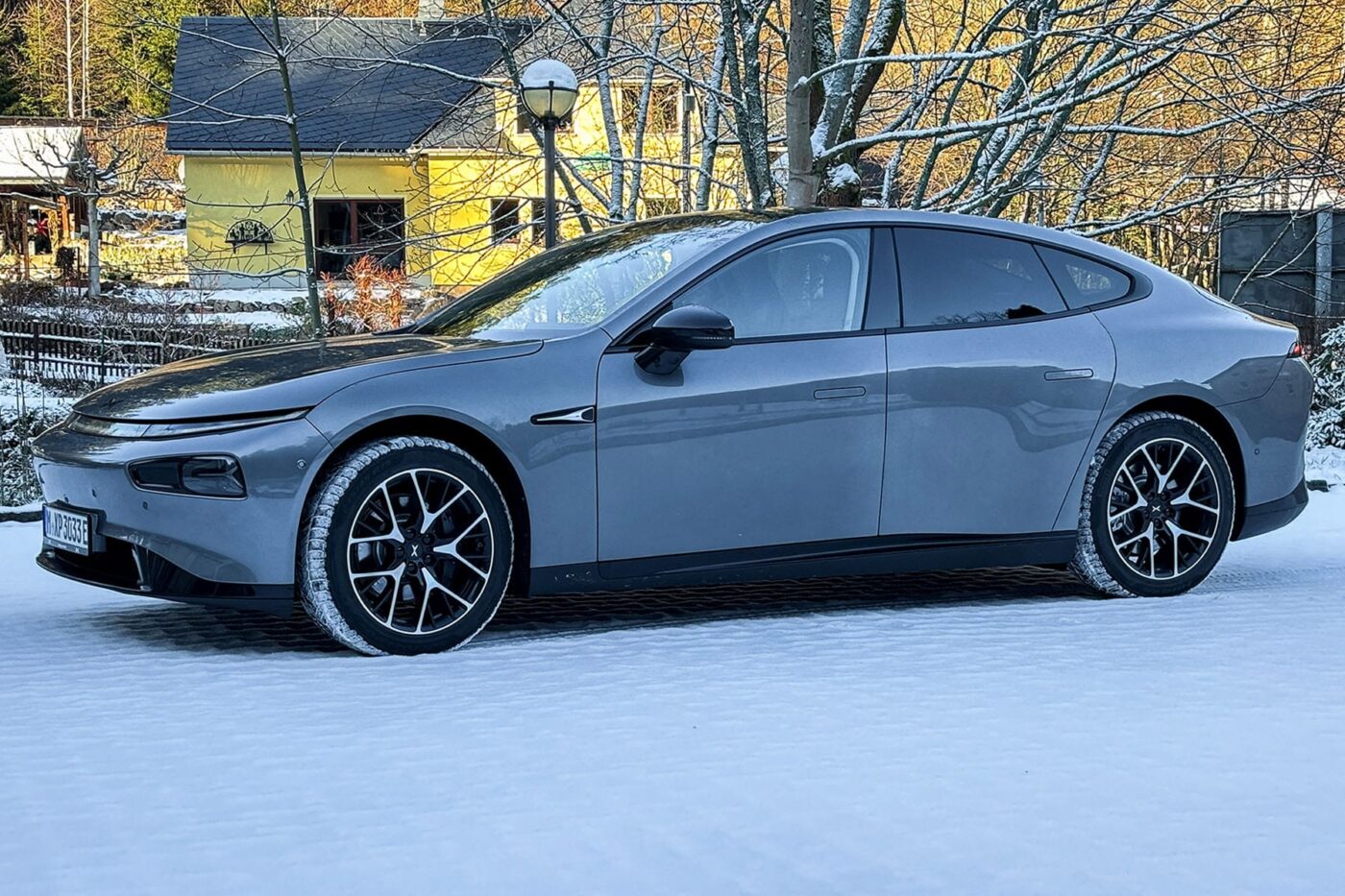
On our winter tours through Berlin, Brandenburg and along the Czech border in the south of Saxony, people often asked us about the sleek look. The amazement was great when we told the people we met about the vehicle’s Chinese origin. Hardly anyone was aware of the Xpeng brand. That is hardly surprising, given that only 32 examples of the P7 have been registered in Germany since its market launch in 2024 – and 393, including the two SUVs.
The drive
The Xpeng P7 drives impressively well. The different suspension settings, which vary depending on the driving mode (Eco, Standard, Sport), are full-bodied. However, the driving experience is not as soft as one might expect. Since the P7 does not have the harshness of a Tesla Model 3 chassis, the suspension effortlessly swallowed up many a pothole-ridden road in eastern Germany. Here, the car lives up to its premium claim. The quality (but the gaps!) and the interior (but the plastic!) are also impressive.
The only thing the developers did not really consider is ergonomics. The central display, which controls all functions, is installed dead straight in the dashboard – and it is too far away. Our driver of 1.80 metres in height had to lean in slightly and support himself with the ball of his hand to properly operate the 10.25-inch touch display. However, you can recover from this after the journey – with a gratitude exercise or deep relaxation, which can be activated via a meditation app in the system. The fact that the driver’s and front passenger’s seats can be reclined to a horizontal position is a great way to reconcile your back with the P7 after a wintry 400 kilometres on the motorway without stopping to recharge.
Charging experience
The Xpeng P7 does a solid job when it comes to charging, even in winter. On the AC side (the most common charging mode in our test period), the display shows a flow of 10.4 kW. Advance planning or charging windows with favourable electricity prices can be set if you familiarise yourself a little with the intuitively designed menu – and interpret all the translations correctly.
Things are a little different with direct current. At the first attempt, we drove to an Ionity charging point somewhat unprepared, meaning that despite driving 100 kilometres (at outside temperatures around freezing point), we did not pre-heat the battery. Even though the SoC was just under 20 per cent, we initially only charged with 85 kW. The VW ID.7 next door showed a significantly better figure. The second test with 30 minutes of pre-heating worked better: starting at less than 20 per cent SoC, the charging process began with 140 kW and reached a peak of 184 kW after a few minutes at 44 per cent. This is almost the same picture as in our last test in summer temperatures, where a peak of 189 kW was reached.
So if you drive the Xpeng P7 in winter, you can expect very good performance, but you have to remember to pre-condition the battery. If a charging stop is planned on the route, the car will do this itself. You can do this manually in the ‘Charge/Discharge’ menu area by tapping the ‘Maintain battery temperature now’ button – and that’s where we’re back to unfavourable translations: We don’t want to maintain, we want to heat!
Consumption rating
It should also be mentioned that charging is not often necessary due to the good efficiency of the drive. As described, 400-kilometre jumps are easily possible even in winter with a moderate driving style (so rarely above the recommended speed). Points are deducted for the charging planner, which wanted to navigate to a Tesla Supercharger on a planned trip to Munich. If you don’t know that you need a Tesla account and the corresponding app, you’re driving into a trap. Incidentally, the manufacturer communicates a WLTP range of 505 kilometres and a consumption of 19.2 kWh per 100 kilometres. We used between 20.6 kWh in Eco mode and 22.6 kWh in Standard mode with a pleasant interior temperature. We weren’t travelling in Sport mode, as it was somehow too cold for that.
Speaking of temperature: that’s one thing in winter. It takes time until the car is warm and cosy. Especially in the second row of seats. Only the steering wheel heater actually works quickly. Even the seat heating is slow to warm up. Operating the air conditioning – if you want to set more than just the temperature and airflow intensity in addition to the automatic mode – is also a complex endeavour on the display. Simplicity would be desirable here in particular. The air conditioning system audibly documents its hard work, but this is only noticeable to the pedestrians in the neighbourhood.
We also found the power consumption to be quite high on many short everyday journeys, as the heating puts a lot of strain on the battery, as can be expected. The range dropped dramatically without the car making much progress on the road. What is pleasing, however, is how quickly the car is ready to start: the computer starts up immediately and without delay. In general, the software always responds smoothly and without interruptions.
What else?
With the Xpeng P7, developers wanted to do a lot of things right and were clearly inspired by Tesla and German premium manufacturers. However, not every detail has been thought through. For example, if you pull the CCS plug out of the socket after charging, the charging flap closes automatically after just a few moments. We only noticed it when we heard a strange rattling noise as we continued our journey: The DC connection cover was still hanging out, which we hadn’t noticed in the dark.
Another detail is the boot – or rather its manual opening. We couldn’t find a button for it for days until the test driver’s child intuitively pressed a button in the centre of the bumper. We had suspected one of the many radar sensors there.
You can tell from little things like this that Xpeng is a newcomer and hasn’t been building cars for decades. However, we assume that the Chinese developers will learn quickly and improve even faster. We were all the more pleased with the soft-close function on all four doors. That’s premium! And that really says it all about this fully electric luxury sedan that is suitable for everyday use. The only thing we really missed was a frunk – and perhaps a little more space in the boot.
In the end, the Xpeng P7 also cured its speech impediment. With the start of 2025, an update flew through the New Year’s air. Lo and behold: the BEV has properly pronounced everything since then.

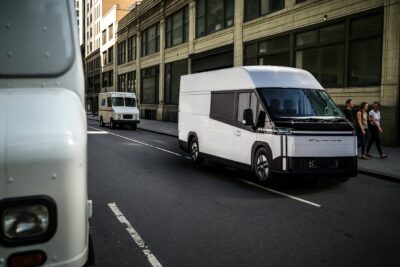

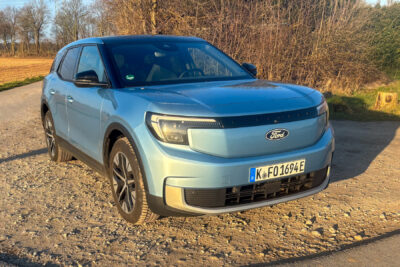
0 Comments